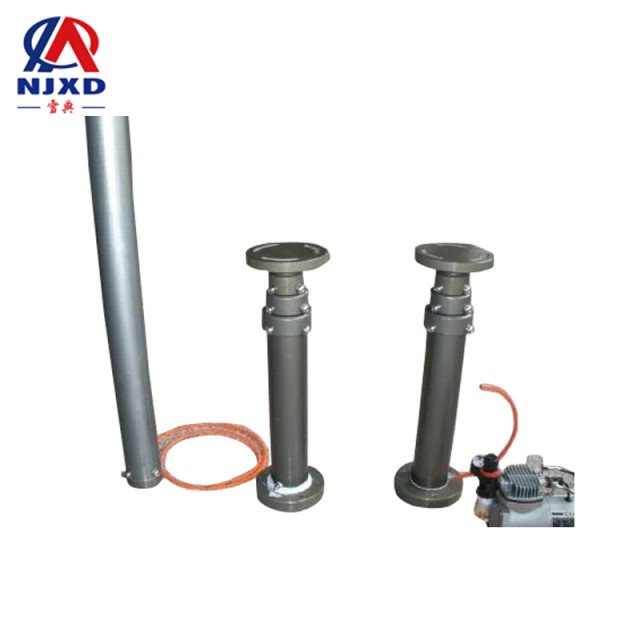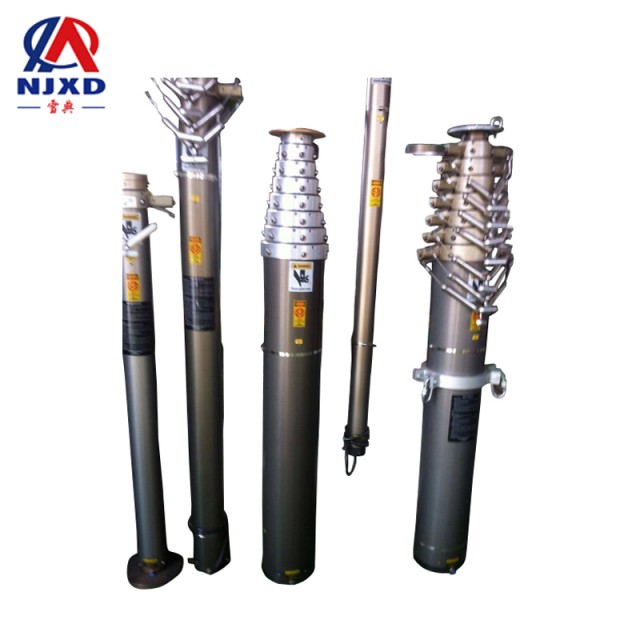NEWS
Performance and application of stainless steel lift rod materials
Time:2021-09-29 View:

Physical properties
It can be used in telescopic mast.
Compared with carbon steel
1. Density
The density of carbon steel is slightly higher than that of ferrite and martensite stainless steel, but slightly lower than that of austenite stainless steel;
2. Resistivity
Resistivity increases according to the order of carbon steel, ferrite type, martensite type and austenite type stainless steel;
3. The order of linear expansion coeffcient is similar, with the highest austenite stainless steel and the smallest carbon steel;
4. Carbon steel, ferrite-type and Martensite-type stainless steel are magnetic, while austenite-type stainless steel is non-magnetic, but it will produce magnetic properties when cold work hardening generates martensite transformation, heat treatment can be used to eliminate this martensite structure and restore its nonmagnetism.
Compared with carbon steel, austenitic stainless steel has the following characteristics:
1) high resistivity, about 5 times that of carbon steel.
2) linear expansion coeffcient larger, 40% larger than carbon steel, and with the increase of temperature, the value of linear expansion coeffcient increases accordingly.
3) low thermal conductivity, about 1/3 of carbon steel.

Typical use
Most of the usage requirements are to maintain the original appearance of the building for a long time. When determining the type of stainless steel to be selected, the main consideration is the required aesthetic standard, the corrosiveness of the local atmosphere and the cleaning system to be adopted. However, more and more other applications only seek structural integrity or impermeability. For example, roofs and side walls of industrial buildings. In these applications, the construction cost of the owner may be more important than aesthetics, and the surface may not be very clean. The effect of using 304 stainless steel in dry indoor environment is quite good.
However, to maintain its appearance outdoors in towns and country, it needs to be cleaned frequently. In heavily polluted industrial areas and coastal areas, the surface will be very dirty and even rust will occur. However, to obtain the aesthetic effect in outdoor environment, nickel-containing stainless steel is needed. Therefore, 304 stainless steel is widely used for curtain wall, side wall, roof and other building purposes, but 316 stainless steel is best used in the aggressive industrial or marine atmosphere. There are several design criteria including 304 and 316 stainless steel.
Because "duplex" stainless steel 2205 has integrated good atmospheric corrosion resistance, high tensile strength and elastic limit strength, this kind of steel is also included in the European code. Product shape, in fact, stainless steel is manufactured in full standard metal shape and size, and there are many special shapes. The most commonly used products are made of sheet and strip steel, and special products are also produced with moderate thickness plate, for example, hot rolled structural steel and extruded structural steel. There are also round, oval, square, rectangular and hexagonal welded pipes or seamless steel pipes and other forms of products, including profiles, bar, wires and castings. In order to meet the aesthetic requirements of architects, many different commercial surface working have been developed.
3d printing field
Stainless steel itself has good corrosion resistance and can still maintain its excellent physical and mechanical properties at high temperatures. It is also widely used in the field of 3d printing.
